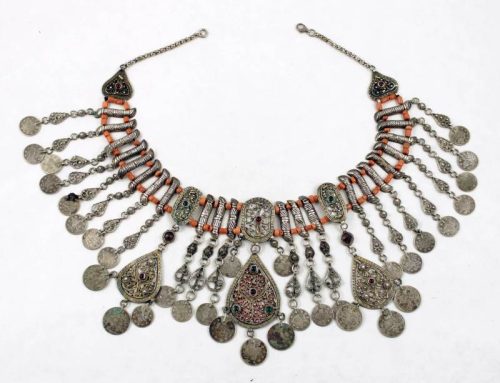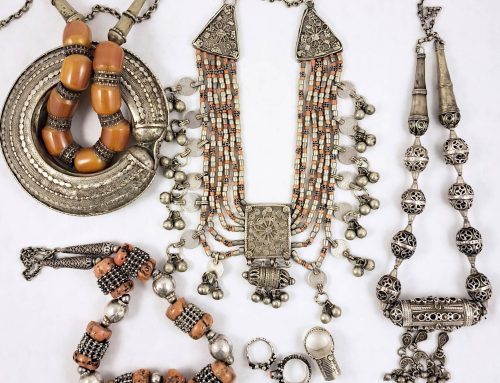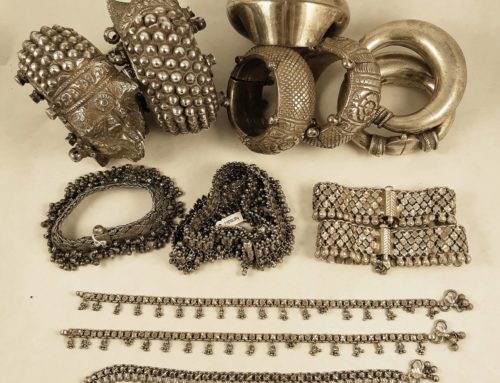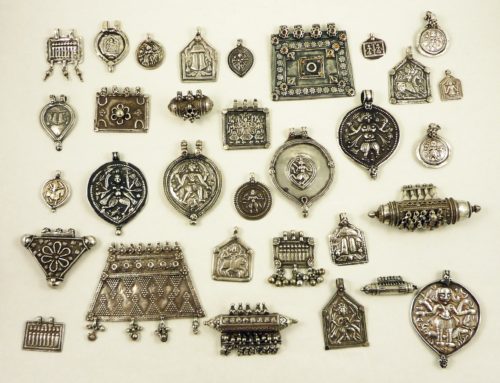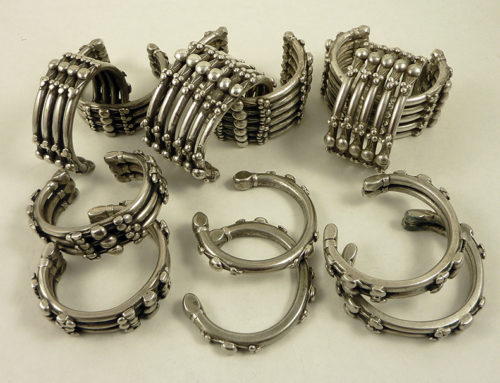In the winter of 2006, a new sort of Mongolian paintings began to appear on the market, especially ebay. Compared to the thangkas, these were usually extremely small, as few as three centimeters in length although most were 5 to 15 centimeters on their longest side, and some were larger.
The quality of the artistic craftsmanship ranged from splendid to dreadful, indicating that their original purchasers were from a wide range of economic statuses. Most of these miniature thangkas depicted deities who would be familiar to anyone well acquainted with Vajrayana Buddhist iconography, but the size of these miniature thangkas was rarely seen in the West. Once they began to appear, they arrived on eBay in significant numbers. All of those miniature thangkas were being sold by dealers in Mongolia.
New copies are being sold now.
Tsaklis, Thangkas and Burhany Zurags
While they are thangkas in the most general sense of being instances of portable Vajrayana Buddhist painting in the Tibetan tradition, they do not function as thangkas do. They cannot be rolled up, they are not to be hung on walls, they are not framed in brocade and they are quite small. Obviously they derive from the same iconographic tradition, but they are different in function than thangkas are.
At first glance they might appear to be tsaklis. But they are not tsaklis. Tibetan tsaklis are usually somewhat larger than the typical Mongolian miniatures, they are made of primed cloth or, most commonly, from thin sheets of paper glued together to produce a stiff cardboard. The central images are surrounded by a much wider red border than is ever found on the Mongolian paintings. Tsaklis come in sets containing considerable numbers of examples of different deities or of the same deity in various forms.
Tsaklis are used as portable substitute temples to allow a wide range of initiations, consecrations and offerings to be performed outside a temple building. Tsakli sets are for the use of monks in their ministrations, not for laypeople to use in the course of daily life. Accordingly, Tibetan tsaklis are thick and substantial, designed to be repeatedly physically handled, moved, placed, and held up for inspection. Because of this repeated handling, used tsaklis have well-worn rounded edges; this repeated usage and wear is the reason that Tibetan tsaklis have wide red margins surrounding and protecting the central painted image. As a further protective device, Tibetan tsaklis are often glazed to protect the painted surface.
Mongolian burhany zurag
What are then these miniature Mongolian paintings? they are bughany zurag.
In Mongolia burhany zurags were used by both Mongolian laity and Mongolian monks for devotional purposes and to attract the favorable attention of the deity represented in the painting either to bring benefits or to protect from inimical forces. They were usually placed in a frame or gau that was worn around a person’s neck or in a gau that was placed in the altar space of a ger. Often a gau functioned as a container for a set of magical amulets and printed portions of sutras and icons of deities with the favored deity depicted in a burhany zurag that was framed and facing outward.
Particular deities, and hence particular burhany zurags, were assigned to individuals through astrological chance, for each person’s time of birth placed them in relationship to specific deities. Further, individuals in Mongolia who encountered particular problems in regard to finances or sexuality or health could, after consultation with astrologers and monks, purchase burhany zurags of deities whose influences were especially relevant to their problems. An individual may have accumulated quite a few burhany zurags throughout the course of his or her life as problems arose or as circumstances developed that required the assistance of different deities. Burhany zurags, then, are devotional icons symbolizing the presence and helpful assistance of deities, icons that were purchased by individuals for their particular needs. Like Roman Catholic holy-pictures of saints and of the Blessed Mother and of Jesus Christ, burhany zurags were as much or more a part of the religious life of laity as of the religious life of monks.
What is the age of Burhany Zurags?
During the period of Mongolian communism beginning in 1924, but especially the period from 1937 – 1990, Buddhist practices were outlawed, monastic life was forbidden and monks returned to lay lifestyles, monasteries were destroyed, sutras were burned and burhany zurags could not safely be displayed or produced.
By 1940, Buddhism as an institutional religion had entirely disappeared from Outer Mongolia. Buddhism was practiced in secret. This devastating fact of recent Mongolian history means that virtually all of the burhany zurags that were not made in the past few years were produced and principally used more than 80 years ago.
Mongolian deities are both Vajrayana Buddhist and shamanistic. Vajrayana Buddist deities are divided into two broad categories: Peaceful Buddhas and Wrathful Protectors although there are also deities of significant importance called Worldly Protectors who do not properly fit into either of those categories.
The Mongolian miniatures shown here are all for sale.
To know more about the deities represented on each burhany zurag shown on this post, please click on the images.
The information have been synthesized from an article that appeared in Asian Arts magazine on April 08, 2010:
“The Miniature Paintings of Mongolian Buddhism: Tsaklis, Thangkas and Burhany Zurags”
by Stevan Davies
Professor of Religious Studies, Misericordia University
This is the link to the full article on burhany zurag Mongolian miniatures






